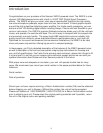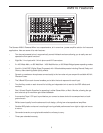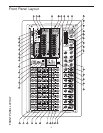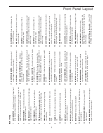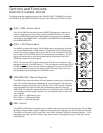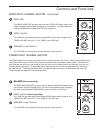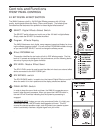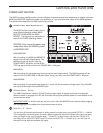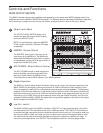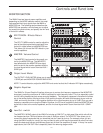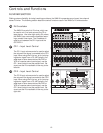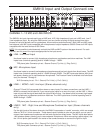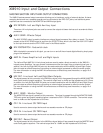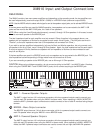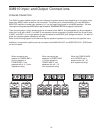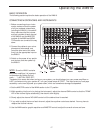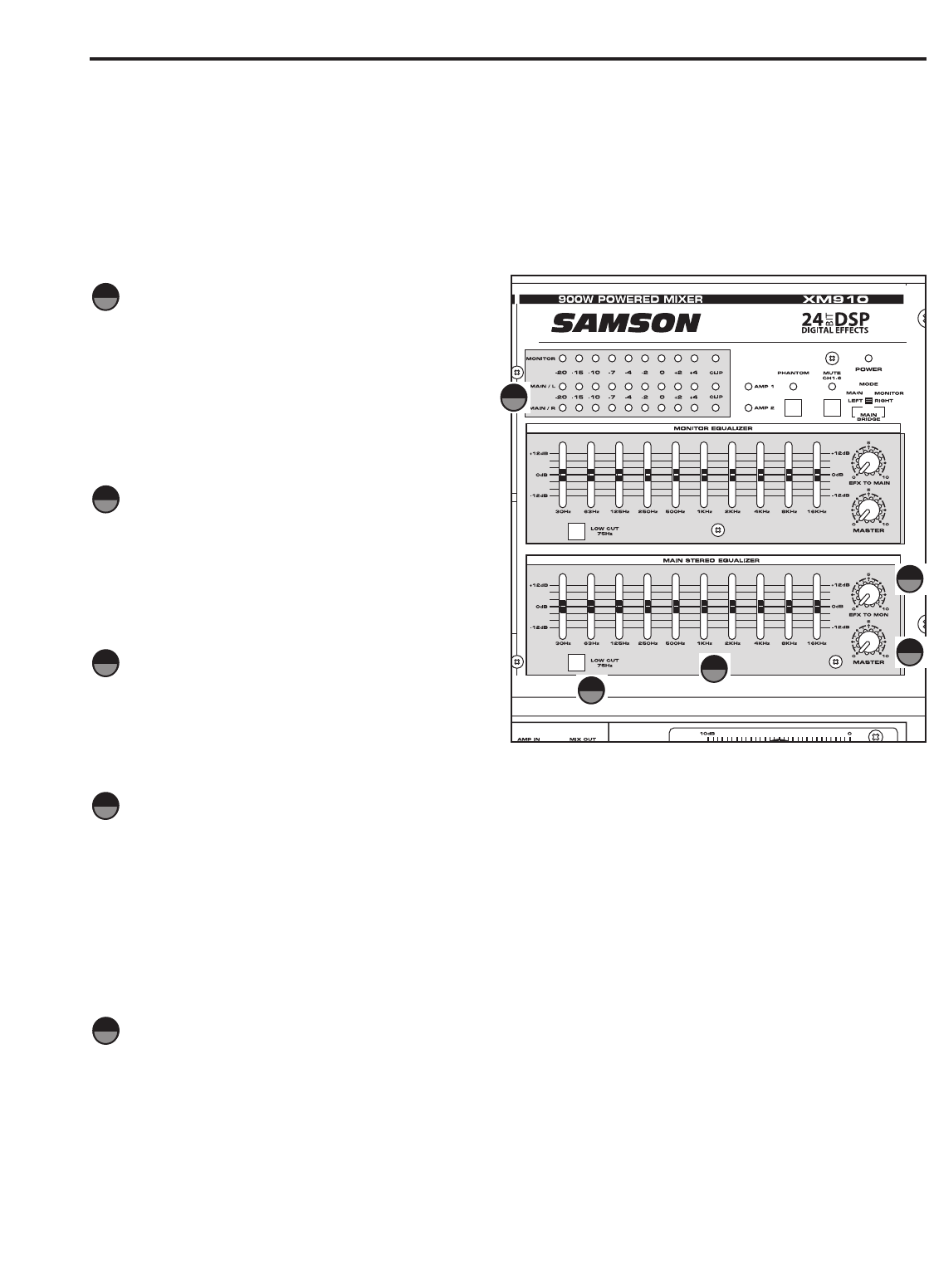
10
MAIN OUTPUT SECTION
The XM910 has two internal power amplifiers and depending on the power amp MODE selection switch, the
amplifiers are sent the MAIN or MONITOR bus signal. The following section describes the MAIN bus operation,
which allows you to adjust the over-all tone and volume, and specify the mix level of the built-in effects.
Output Level Meter
The OUTPUT LEVEL METER allows you to
monitor the level of the signal which is being
sent to the MIX OUT jacks.
NOTE: To avoid distortion, adjust the MASTER
LEVEL control so that the 0 indicator LED lights
occasionally.
MASTER - Volume Control
The MASTER level control is the over-all vol-
ume control for the MAIN bus. The MAIN level
affects both the MAIN bus signal which is output
to the speakers and the line level signal which is
output from the MIX OUT jacks.
EFX TO MAIN - Effects Return Control
The EFX TO MAIN control is used to adjust the
level of the effect sound being sent back from
the built-in digital effect to the MAIN mix bus.
This allows you to hear the DSP effects in your MAIN speakers.
Graphic Equalizer
The XM910’s 10-band stereo Graphic Equalizer allows you to contour the frequency response of the
MAIN / MONO mix bus signal, providing a maximum of 12dB of cut/boost for each frequency band.
This is an especially useful tool for cutting frequencies that cause annoying feedback. The frequency
response is flat when the sliders are in the center position. Moving a slider in the positive direction will
boost that frequency by as much as 12dB, and moving the slider in the negative direction will cut that
frequency by up to 12dB. Once you set a response curve using the Graphic Equalizer, the EQ curve
is applied to both the MAIN / MONO bus signal that is output to the speakers, and the line level signal
which is output from the MIX OUT jacks.
Low Cut - switch
The MAIN / MONO output of the XM910 includes a LOW CUT (or high pass) filter which rolls off the
low frequencies from 75Hz and below at the rate of 18dB per octave. The LOW CUT filter allows you
to remove the lower frequencies that you sometime just don’t want to pick up. For example, when you
are using the XM910 mostly for vocals, you may not want to pick up the low end generated by other
live instruments like bass and low-end synthesizers played out of back-line amplifiers on stage. In
many live sound applications, the LOW CUT filter is especially useful for removing stage rumble.
Controls and Functions
19
19
20
21
22
23
20
21
22
23



